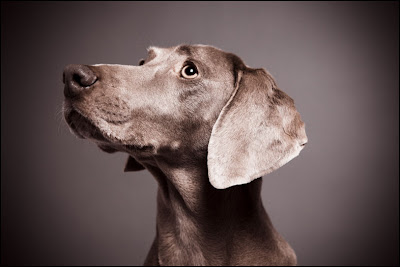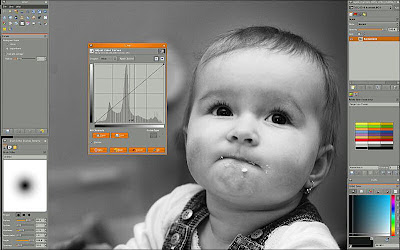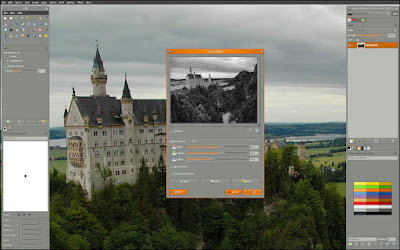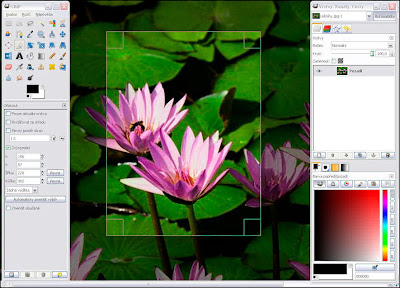
Recently I stopped by a really nice
locally owned dog store, as my three miniature schnauzers would have no less and it's their world, I simply get to live in it.
I favor locally owned businesses vs. "
big box" stores for a bunch of reasons, not the least of which is that I actually receive service and I'm supporting my neighbors... okay, this is me stepping off my soapbox now.
The owners of
Sooper Dogs had put aside a small area where other businesses could leave fliers and business cards and I was immediately drawn to a brochure left by a photographer who specializes in dogs.
I picked up the brochure and was immediately way impressed with how wonderful the dog portraiture was, so when I went home and checked out the blog and website and learned that the person behind the camera matched the quality of the images.
So I contacted the photographer and asked if I could show her work to you good people, so ladies and gentlemen, here is Meredith Perdue.
When did you get into photography?
"After my grandmother gave me my first Minolta at age 10".What do you shoot with?
"I upgraded to a Canon SLR when I joined the high school yearbook staff. Since then, it has been all Canon for me and I've always been extremely happy with their products and services. I began shooting with a 5D last summer and upgraded to a 5D MK II earlier this year - I love them both! After looking at the photos I've submitted, you might think I only have (or use) one lens- my 24-70mm f/2.8L. While I have several other great Canon lenses, the 24-70 is one of my favorites, and most useful, for dog photography. Dogs can be quick subjects and some are always on the move. With the 24-70 I can go from a fairly wide shot to a tight shot in no time. I love my 50mm f/1.4 and use that at each session too. I pull out my 70-200mm f/2.8 if the dog is a little camera shy and likes their space. Using a fisheye lens with dogs is always fun for me - I love the distortion on a dog!"How did you get started with dogs?
"I began photographing my own dog, Orvis, which came quite naturally to me, as he & photography are two of my life's loves! I started a daily photo blog for Orvis, Life: Lab Style and began posting a photo of Orvis each day of the week. I then moved on to photographing friends' dogs and quickly found my passion. I've discovered that I am at my happiest rolling around on the ground with a dog, camera in hand. Dogs have nothing to hide when they're in front of the camera- which makes them my ideal subject!"What is your favorite accessory?
"I just started using a Shootsac for my lenses during shoots. I love having everything I need at my fingertips, without having to wear my bulky camera bag on my back The stylish cover is an added bonus! You'll also find some photographer staples like a water bottle, CF cards, flash, business cards in it. No shoot is complete without some delicious dog treats! I always have a few kinds of all-natural, grain-free treats in my bag, for dogs who might be on a special diets."How do you market yourself?
"I'm a big believer in word of mouth marketing. Taking care of my clients is at the core of this belief for me. When clients are happy, they talk! I also use social media sites like Facebook and Twitter to promote any news or discounts, along with my monthly e-mail newsletter. I'm extremely fortunate to have a studio storefront with giant windows where I can display my work or promote any sort of special I might be having. My studio is located in a family friendly beach neighborhood, across the street from the town's favorite bakery and right next to a new (and delicious!) ice cream shop. I'm lucky to be located in such an awesome space with a great amount of foot traffic!"Take a minute to visit Meredith
website and
blog, her images will bring a smile to your face.
Here are a few more of her images, click on any of them to view in a new (
and larger) window.
 "I consider this picture to be one of the first times I fell in love with photographing dogs. I was attending a photography workshop on Cape Cod and my assignment was to document one of the YMCA camps there. I chose to cover the camp from the angle of Gracie, the "camp dog." I had a blast following Gracie around for two days and seeing what life as a camp dog was like. Needless to say, she lives a great life!"
"I consider this picture to be one of the first times I fell in love with photographing dogs. I was attending a photography workshop on Cape Cod and my assignment was to document one of the YMCA camps there. I chose to cover the camp from the angle of Gracie, the "camp dog." I had a blast following Gracie around for two days and seeing what life as a camp dog was like. Needless to say, she lives a great life!"
Equipment: Canon 5D, 24-70mm lens, exposed for 1/800 at f3.2 at ISO 400.
 "I took this of my own lab, Orvis, on a trip to the Pemaquid Lighthouse. I have it printed on a 20 x 30 canvas behind my desk at my studio. The image is very "Maine" to me, I include it in a lot of my marketing materials, as many of my New England clients can appreciate the notion of dogs & lighthouses. It's also reminiscent for me, on a personal level, of a wonderful, lazy Sunday afternoon spent with my family."
"I took this of my own lab, Orvis, on a trip to the Pemaquid Lighthouse. I have it printed on a 20 x 30 canvas behind my desk at my studio. The image is very "Maine" to me, I include it in a lot of my marketing materials, as many of my New England clients can appreciate the notion of dogs & lighthouses. It's also reminiscent for me, on a personal level, of a wonderful, lazy Sunday afternoon spent with my family."
Equipment: Canon 5D, 24-70mm lens, exposed for 1/2000 at f2.8 at ISO 200.
 "I snapped this photograph of my mother's golden retriever, Mason, as he was rolling around on a soccer field in North Carolina. When I look at this photo I'm reminded that it is the little things in life that make us the happiest. Mason looks completely content with the world and could roll around all afternoon with this tennis ball in his mouth."
"I snapped this photograph of my mother's golden retriever, Mason, as he was rolling around on a soccer field in North Carolina. When I look at this photo I'm reminded that it is the little things in life that make us the happiest. Mason looks completely content with the world and could roll around all afternoon with this tennis ball in his mouth."
Equipment: Canon 5D, 24-70mm lens, exposed for 1/3200 at f2.8 at ISO 400.
 "I took this photograph of my dog, Orvis, one afternoon as he was looking out the window. Orvis is an extremely tall lab and we're always commenting on his long, skinny legs, this is a personal favorite!"
"I took this photograph of my dog, Orvis, one afternoon as he was looking out the window. Orvis is an extremely tall lab and we're always commenting on his long, skinny legs, this is a personal favorite!"
Equipment: Canon 5D, 24-70mm lens, exposed for 1/40 at f2.8.
Here are the details for the image at the beginning of this post:
"Conjure, a Weimaraner, came to the studio for her session a few months ago. I caught this majestic-like moment as she looked up at
her owner, Jill."
Equipment: Canon 5D MK II, 24-70mm lens, exposed for 1/160 at f5.0 at ISO 200.
Lighting: One Alien Bees flash unit with a large softbox.











































